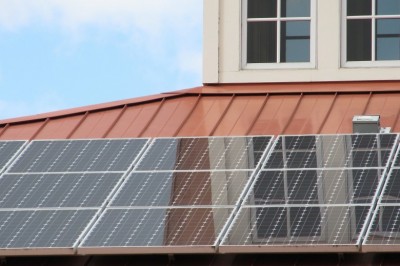The Environmental Benefits of Using Solar Panels As An Energy Source
You probably know the sun generates more than 10,000 times the amount of energy the entire world consumes annually. Yet, this "free" energy has remained greatly untapped. Conversely, the environment is being degraded by our current energy choices. The positives for using solar panels are obvious, but what few know is how it also helps our environment.
First lets look at what we are using currently to meet our energy needs, coal and nuclear energy, and how ecologically damaging they are.
To start, most existing coal plants release many different toxins directly into the air we breathe, from sulfur to lead and mercury. Even the newer plants coming on line, which reduce toxins dramatically, still produce massive quantities of CO2, a greenhouse gas and a direct cause of global warming. Natural gas is far more benign but still produces large quantities of CO2 when used to produce electricity. How much CO2 is released - a 5-kilowatt solar system will prevent the release of nearly 10,400 pounds of CO2 every year for the life of the system. The average home uses 8,000-kilowatt hours per year. A coal power plant producing that much electricity emits about 18,000 pounds of CO2 per year.
When coal is burned, carbon dioxide, sulfur dioxide, nitrogen oxides, and mercury compounds are released. For that reason, coal-fired boilers are required to have control devices to reduce the amount of emissions that are released. Mining, cleaning, and transporting coal to the power plant generate additional emissions. For example, methane, a potent greenhouse gas that is trapped in the coal, is often vented during these processes to increase safety.
Secondly, large quantities of water are needed to remove impurities from coal at the mine. These large quantities of water are used for producing steam and for cooling systems. When coal-fired power plants remove water from a lake or river, the fish and other aquatic life can be affected, as well as animals and people who depend on these aquatic resources. At the same time, pollutants build up in the water used by the power plant boiler and cooling system. If the water used in the power plant is discharged to a lake or river, the pollutants in the water can harm fish and plants.
Last, the burning of coal creates solid waste, called ash, which is composed primarily of metal oxides and alkali. On average, the ash content of coal is 10 percent. Solid waste is also created at coal mines when coal is cleaned and at power plants when air pollutants are removed from the stack gas. Much of this waste is deposited in landfills and abandoned mines, although some amounts are now being recycled into useful products, such as cement and building materials.
So, you may say, what about nuclear power? While nuclear power plants do not emit carbon dioxide, sulfur dioxide, or nitrogen oxides - fossil fuel emissions are associated with the uranium mining and uranium enrichment process as well as the transport of the uranium fuel to the nuclear plant. Nuclear power plants also use large quantities of water for steam production and for cooling. When nuclear power plants remove water from a lake or river, fish and other aquatic life can be affected. Water pollutants, such as heavy metals and salts build up in the water used in the nuclear power plant systems. These water pollutants, as well as the higher temperature of the water discharged from the power plant, can negatively affect water quality and aquatic life.
Waste generated from uranium mining operations and rainwater runoff can contaminate groundwater and surface water resources with heavy metals and traces of radioactive uranium. Every 18 to 24 months, nuclear power plants must shut down to remove and replace the "spent" uranium fuel. This spent fuel has released most of its energy as a result of the fission process and has become radioactive waste.
All of the nuclear power plants in the United States together produce about 2,000 metric tons per year of radioactive waste. Currently, the radioactive waste is stored at the nuclear plants at which it is generated, either in steel-lined, concrete vaults filled with water or in above-ground steel or steel-reinforced concrete containers with steel inner canisters. This waste will remain radioactive for many thousands of years.
As you can see, the more solar power is used, the more it helps our environment. By investing in solar today you are investing in your future and your childrens future and you do this by combating global warming and reduce our nations dependence of foreign energy sources. And, you are helping in the reduction of CO2 emissions and protecting clean water sources. Its amazing how such a small change in ones life can do so much.ARI Green Energy is a manufacturer of wind generator technologies. Visit them today for a full line of wind turbines and solar technology solutions. Think green.
























